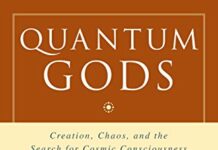
Ebook Info
- Published: 2013
- Number of pages: 332 pages
- Format: PDF
- File Size: 3.82 MB
- Authors: Victor J. Stenger
Description
This history of atomism, from Democritus to the recent discovery of the Higgs boson, chronicles one of the most successful scientific hypotheses ever devised.Originating separately in both ancient Greece and India, the concept of the atom persisted for centuries, despite often running afoul of conventional thinking. Until the twentieth century, no direct evidence for atoms existed. Today it is possible to actually observe atoms using a scanning tunneling microscope. In this book, physicist Victor J. Stenger makes the case that, in the final analysis, atoms and the void are all that exists.The book begins with the story of the earliest atomists – the ancient Greek philosophers Leucippus, Democritus, and Epicurus, and the Latin poet Lucretius. As the author notes, the idea of elementary particles as the foundation of reality had many opponents throughout history – from Aristotle to Christian theologians and even some nineteenth-century chemists and philosophers. While theists today accept that the evidence for the atomic theory of matter is overwhelming, they reject the atheistic implications of that theory.In conclusion, the author underscores the main point made throughout this work: the total absence of empirical facts and theoretical arguments to support the existence of any component to reality other than atoms and the void can be taken as proof beyond a reasonable doubt that such a component is nowhere to be found.
User’s Reviews
Reviews from Amazon users which were colected at the time this book was published on the website:
⭐God and the Atom by Victor J. Stenger”God and the Atom” is the instructive history of the atom. Dr. Stenger takes the reader on a ride through time from Aristotle to the present and in doing so makes the strong case that atoms and the void indeed are all there is. This book chronicles the empirical confirmation of atomism and the notion that we can reduce everything to its parts. It’s a challenging topic that starts off mostly historical, and becomes increasingly scientific but ultimately rewarding as Dr. Stenger brings it all together at the end. This educational 300-page book is composed of the following fifteen chapters: 1. Ancient Atomism, 2. Atoms Lost and Found, 3. Atomism and the Scientific Revolution, 4. The Chemical Atom, 5. Atoms Revealed, 6. Light and the Aether, 7. Inside the Atom, 8. Inside the Nucleus, 9. Quantum Fields, 10. The Rise of Particle Physics, 11. The Dreams that Stuff is Made Of, 12. Atoms and the Cosmos, and 13. Summary and Conclusions.Positives:1. A well-written, well-researched book about the history of the atom.2. Dr. Stenger has complete command of the topic. For the physics lovers in all of us.3. A physics heavy book but the author keeps math to a minimum and focuses on the history and scientific concepts.4. In defense of atomism and reductionism. Defining the terms and providing compelling arguments for its justification.5. Dr. Stenger is always provocative and persuasive. “Time and again, we hear from scientists, philosophers, theologians, spiritualist gurus, and laypeople that “the whole is greater than the sum of its parts.” We will see that while this statement is technically true, it is far less profound than its proponents claim.”6. Interesting history. “In short, the atomism that came out of ancient India maintained the dualism of matter and mind/soul/spirit that is present in most religions while Greek atomism, although accepting the existence of remote gods uninterested in humanity, was distinctly atheistic–at least as the term is used today.” The scientists in favor of atomism and those against and is changed over time and the tipping point.7. Science groupies rejoice…this is a who’s who of science greats and even some lesser known.8. The author captures beautifully scientific progress as it relates to the atom. “Principia presented Newton’s laws of motion and his theory of universal gravitation, from which Newton derived Kepler’s laws of planetary motion. But Principia did much more. It provided the framework for the remarkable scientific achievements that followed. Perhaps the most remarkable was Halley’s comet.”9. The rise and fall of positivism. “While logical positivism held the center stage of philosophy for a while, it eventually fell to the recognition of its own inconsistency. How does one verify verifiability?”10. The great Einstein, “Einstein is remembered for his special and general theories of relativity. But in the same year that he produced special relativity, 1905, Einstein also published two other papers that helped establish once and for all that all material phenomena can be described in terms of elementary particles.”11. Understanding the nature of light. “And so, Einstein revived Newton’s corpuscular theory of light. At the same time, light still diffracted as expected from waves, and no violation of Maxwell’s electromagnetic wave theory of light was found. Light thus exhibits what became known as the wave-particle duality…”12. Particles, particles, particles…” The wave-particle duality thus seems to hold for all particles, not just photons.”13. Important theories and principles, “The basic point is that without the Pauli exclusion principle, the electrons in every atom would settle down to the ground state and we would have no complex chemical structures and a very different universe. It is hard to imagine that any form of life, which depends on complexity, could evolve in such a universe.”14. Understanding nuclear energy. “Nuclear and particle reactions are far more efficient than chemical reactions in converting rest energy to kinetic energy. In these cases, the energies produced are a much larger fraction of the rest energies of the reactants.”15. The four fundamental forces: gravitational, electromagnetic, strong nuclear, and the weak nuclear force.16. The rise of particle physics. “Hadrons were divided into two categories: baryons, such as the proton and neutron, that had half-integral spin; and mesons, such as the pions and K-mesons, that had zero or integral spin.”17. The particles of the standard model. “All the aspects of the standard model have been subject to numerous tests, and no experiment has, as of this writing, uncovered any violation. However, the real crucial tests are coming up as the LHC moves into full-scale operation.”18. The Higgs Boson and its significance. “The main role of the Higgs in the standard model of elementary particles is to provide for the symmetry breaking of the unified electroweak force by giving mass to the weak bosons and splitting the electromagnetic and weak nuclear forces. It also gives mass to the other elementary particles, except for the massless photon and gluon. If elementary particles did not have mass, they would all be moving at the speed of light and would never stick together to form stuff like stars, cats, and you and me.”19. Atomism and the cosmos, “Atomism postulates a universe composed of submicroscopic particles that possess the measurable quantities of mass, energy, and momentum that characterize the inertia we associate with matter.”20. Great explanations of the inflationary model. Dark matter and dark energy, oh my.21. Planck time in perspective, “Because the Planck time is so small by ordinary standards, we can generally get away with treating t as a continuous variable–even in most quantum mechanical applications. However, we cannot assume temporal continuity as we move closer to the origin of our universe. In fact, to properly describe what happens, we need to use a theory in which quantum mechanics and general relativity are combined. Despite decades of effort, no such theory, usually referred to as quantum gravity, has yet to be successfully formulated.”22. One of my favorite quotes, “Why should nothing, no matter how defined, be the default state of existence rather than something? The theist has the burden of showing how there could have been nothing.”23. An excellent final chapter, “Summary and Conclusions” that really puts a fine bow on the book and rewards the reader. “The atomic model, in which the universe is composed of matter and nothing else, is adequate to explain everything we observe and experience as human beings.”24. A final defense for reductionism, “However, if top-down causality existed, we would expect to see some evidence at all levels of complexity–in social systems, brain processes, biological mechanisms, chemical reactions, and on down to subatomic events. The fact is, we don’t. Based on the absence of evidence that should be there but is not, we can rule out beyond a reasonable doubt the existence of top-down emergence. The universe remains reducible to it parts, just as the ancient atomists predicted.” Fabulous!25. Stenger always cites his books comprehensively. Excellent bibliography as well.Negatives:1. Dr. Stenger does everything possible to make this book as accessible as possible by limiting the math but let’s face it; most laypersons will struggle with the physics in this book. This is a challenging book to get through.2. A glossary of the terms would have been helpful.3. The title is a bit misleading. Many of Stenger’s fans may be expecting more anti-religion philosophy but this book is more a defense of atomism and ultimately tying everything together.4. Quantum mechanics is daunting…give it your best shot.5. The book will ultimately reward you but it comes at a price.6. The book does not have the same panache as Stenger’s previous books. This book is a professional, scientific effort. That is, Stenger doesn’t let his hair down too much in this book. This is not what I would call a page turner of a book…In summary, this was a challenging book to get through but it ultimately rewards you. Thankfully, Dr. Stenger is a lucid thinker and gifted writer and was able to minimize the pain that is challenging topics in physics. He does so by focusing on the concepts and minimizing the math. There is no bones about it this book is not for everyone and the layperson will struggle but if you love science and maintain your focus it will pay off in the end. Ultimately, your enjoyment of this book is “relative” to your expectations.Further suggestions: ”
⭐” and ”
⭐” by the same author, ”
⭐” by Walter Lewin, ”
⭐” by Michio Kaku, ”
⭐” by Clifford A. Pickover, ”
⭐” by Lawrence Krauss, ”
⭐” by Lisa Randall, ”
⭐” and ”
⭐” by Brian Cox, “The Big Bang: The Origin of the Universe” by Simon Singh, and “The Grand Design” by Stephen Hawking.
⭐I read this book after a fellow Epicurean philosopher encouraged me to read it and anything by the author. Victor J Stenger, who passed away a couple of years ago, was one of the staunchest defenders of the classical model of physics, the one that remains truest to the original model invented by the Leucippus-Democritus dynamic duo and perfected by Epicurus and his friends thousands of years ago.The book is of particular importance today against the background of “What the Bleep Do We Know” and other, similar, documentaries that use quasi-mystical misinterpretations of quantum theory (neo-Pythagorean sorcery, it seems) to advance obscure New-Agey teachings. Stenger sets the record straight: the quantum field, like all fields and everything else, is made up of particles and void. Fields are made up of points, each with its own value. They are not etheric or liquid or of some substance other than particles and void.The title of this book, some may argue, is misleading. The book is about achievements of atomism, and for someone uninitiated like myself, it’s mostly over my head (particularly the algebraic formulas used by particle physicists). The conclusion is the most valuable chapter, and gets closer to the point that the book is making: particle physics may be complicated but it is not, and should not be appropriated by, hocus pocus. The book simply does not delve much into theology because, frankly, there just isn’t any evidence to consider in this regard, and physics requires evidence.One of the key blows to this or any other supernatural hypothesis is the predictability and stability that is represented not by God or any other supernatural agency (which, the author reminds us, is unnecessary in the atomic model), but by the laws of nature. These laws create a model that can be relied upon and which has no underlying intelligences or entities.Like Lucretius does in his De Rerum Natura, Stenger gives us familiar observations to explain fundamental aspects of nature. For instance, while explaining how more density = less space available, he notes that the difference in atmospheric pressure in the mountains and at sea proves that a void is possible.Religion peddlers have been always accused of inventing gods of the gaps. In atomism, we leave the gap as it is, without projecting our supernatural fantasies against it: we accept the existence of the void, and also of a natural measure of chaos. The swerve, which in modern physics is compared to the Heisenberg uncertainty principle, which introduces randomness into the nature of things. It turns out that many people have difficulty accepting randomness, chance, as a factor in nature.The author also pays attention to the Platonic nature of the supernatural claims against science, and paraphrases my own insights into what I called the emergence paradigm in my article (written for the Society of Epicurus page) On Why Materialism Matters. There, I argued that the study of nature produces a universes that us organized from the bottom up, never from the top down.The book gives us some perspective on how the rejection of Epicurus’ atomic theory halted the progress of scientific thought for an entire millennium, and how Aristotle (who denied the theory of the atom) was revered throughout the Middle Ages by Christians who thought that he vindicated their religious worldview. To this day, the excessive reverence of Aristotle and Plato, together with the demotion of the philosophers who DID describe reality accurately (Democritus, Epicurus) still dominates academic philosophy, as Michel Onfray argues when calling for a Counter-history of Philosophy.There are many other ways in which Stenger vindicates Epicurus: for instance, he posits that there are primary and secondary properties. Epicurus labeled these secondary properties as “relational”, and they are central to the theories he expounds in his Epistle to Herodotus.The book God and the Atom is about the many achievements of atomism, focusing more on the scientific ones than in the philosophical, religious or ethical ones–but these other achievements, argued Epicurus, were just as important!
⭐Dr Stenger writes in a way that makes the complex subject of particle physics easy to read. Using the chronology of the development of atomism he beautifully illustrates the latest theories in physics and cosmology.
⭐Great product, swift delivery. Thanks.
⭐Superb book well put together, easy to read and excellently thought out arguments.
⭐La parte histórica que trata la antigüedad es superficial, y parece contener unos elementos copiados de algún manual. No he llegado más lejos.
⭐
Keywords
Free Download God and the Atom in PDF format
God and the Atom PDF Free Download
Download God and the Atom 2013 PDF Free
God and the Atom 2013 PDF Free Download
Download God and the Atom PDF
Free Download Ebook God and the Atom




